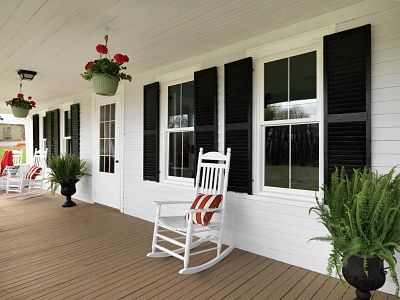Windows make for the most important feature of a home by attributing it personality and look. They make for a different view altogether as compared to a beautifully furnished room. A feature, whose presence, if made well, requires adding lesser frills to the interiors in terms of decoration. Women seem to link better with windows! But that’s beside the point.
Windows, particularly window panes, have been quite the reason for soaring energy bills in most homes hence, the need for having good windows. Energy saving windows is the need of the hour. Advances in technology have made this possible to quite an extent with the double or triple glazed windows. Therefore you can aptly consider this for your casement windows which have been troubling you all the while!
The concept of U-factor Ratings
A concept developed by the National Fenestration Ratings Council (NFRC), the U-factor rating measures the heat loss occurring through the window. It has been the highlighting factor for the energy saving windows and the preference for consumers throughout. All windows have a U-factor rating, ranging between 1.3 and 0.20. However, lower the rating the better it is. The stats below might provide a better understanding:
- Old casement window made of metal rates 1.3 on the U-factor scale.
- Single pane window of good-quality 1.0
- Single pane window of good quality with storm window included stands at 0.6
- Low E-glass double paned makes for 0.4
- Low E-glass triple paned rates 0.25

Homeowners prefer going for the thermal replacement windows therefore. They are mostly double or triple paned. They allow far less heat to escape from your room in the winters and less heat to get in during summers, helping reduce energy bills considerably. Most of them also eliminate the need for painting! They may have additional alternative specifications like:
- Low E-glass, which has a certain type of coating to block lights rays that are beyond our vision and for better insulation as well.
- Use of Argon gas, which is filled in the space between the glass panes for better insulation.

Thermal replacement windows are known to pay for themselves because of the energy savings that they are able to make. They are also termed “maintenance free” windows which is partially debatable though, because they do require cleaning from time to time. Moreover, rather than relying on sales pitches, you can make yourself aware of a few performance rating coefficients before deciding on the kind of thermal replacement window you would want to go for. They are:
- Air Leakage, measuring the amount of air infiltrating through your window installation.
- Solar Heat Gain Coefficient, measuring the window’s heat gains during the summer months.
- Condensation Resistance, measuring the window's ability to resist the formation of condensation. Mostly for tropical climates.
- Visible Transmittance, measuring the amount of light allowed passing through the window. This factor however deals with the buyer’s preference rather than the window’s performance. The higher the number, the more the daylight.

Conclusively, there are varied options when it comes to investing in thermal replacement windows, depending on the climate in which you live and your personal preferences. Overall, thermal replacement windows are energy saving windows having the lowest U-factor ratings and of course rated the best so far, when compared against various essential window considerations.
Found the read informative? Pen down your thoughts in the comments section.





